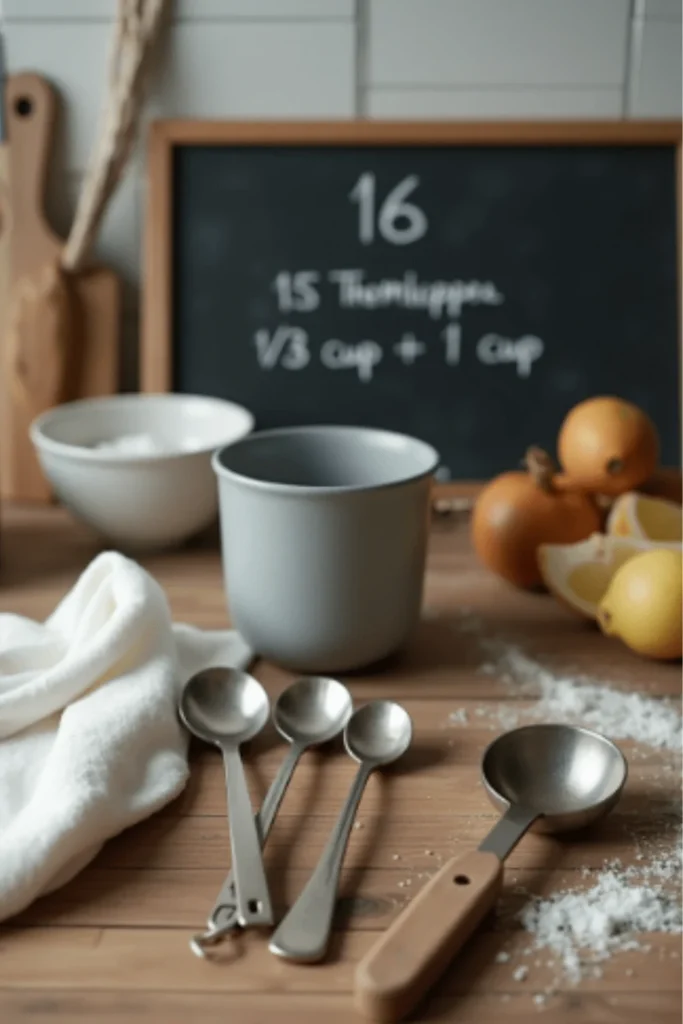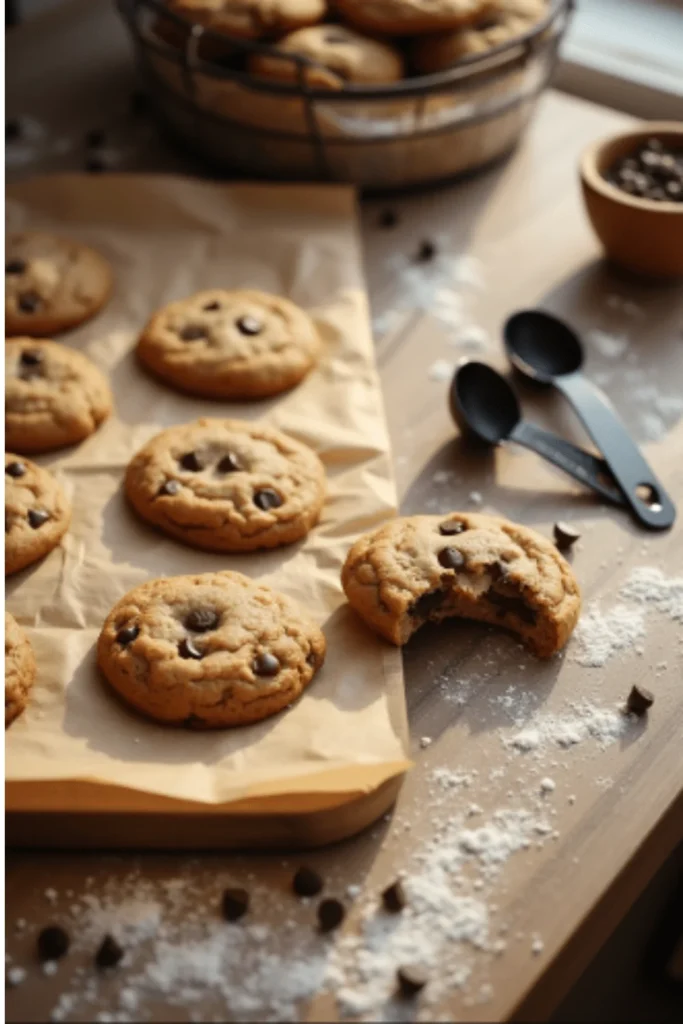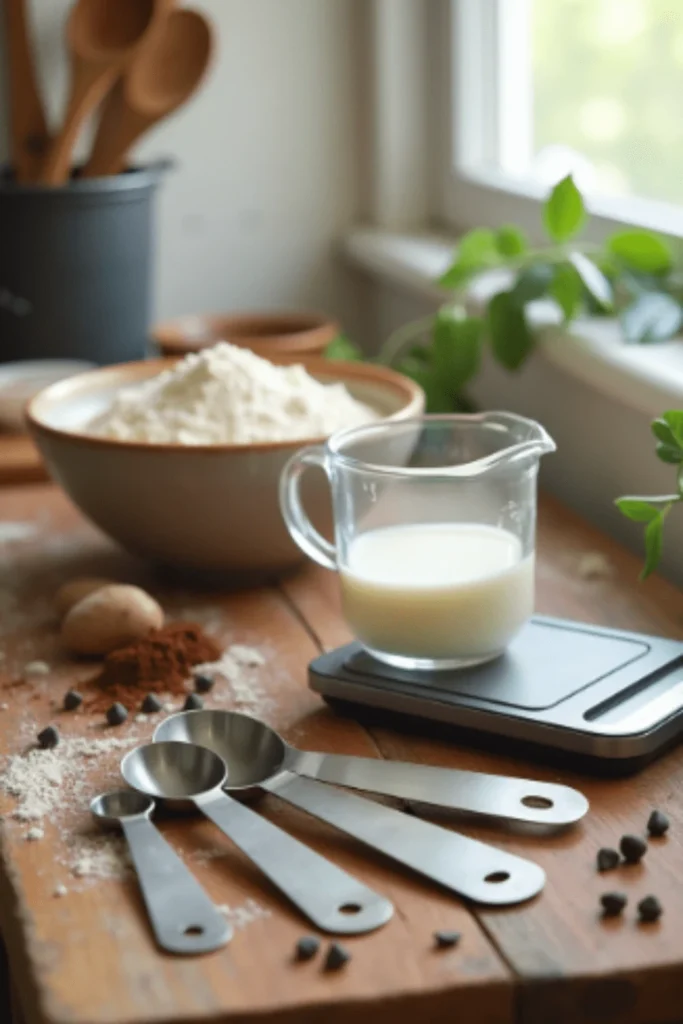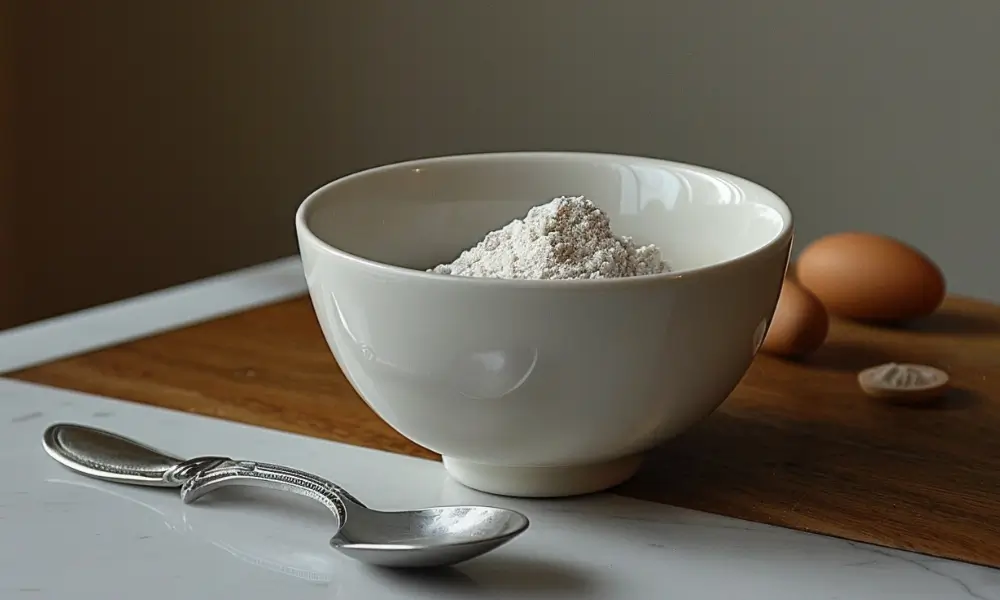How many tablespoons in 1/3 cup?” This is a common question that comes up when you’re cooking or baking and need precise measurements. Whether you’re a seasoned chef or a beginner in the kitchen, understanding simple conversions like this can save the day.
Cooking and baking are like little adventures, but they can get tricky when a recipe calls for 1/3 cup, and all you have are tablespoons. Accurate measurements are the key to delicious results—too much or too little of an ingredient can completely change a recipe. By learning how to convert cups to tablespoons, you’ll avoid kitchen mishaps and cook with confidence.
In this guide, we’ll make it super easy to understand. By the end, you’ll master the conversion of how many tablespoons are in 1/3 cup and be ready to tackle any recipe like a pro. Let’s get started!
Understanding Measurement Systems
The U.S. Customary System vs. the Metric System
Have you ever noticed how recipes can look different depending on where they come from? Some use cups and tablespoons, while others mention grams and milliliters. That’s because there are two main measurement systems used around the world: the U.S. customary system and the metric system.
The U.S. customary system is what most people in the United States use. It relies on familiar measurements like cups, tablespoons, teaspoons, and ounces. For example, recipes from American cookbooks will often ask for 1/3 cup of sugar or 2 tablespoons of oil. This system feels simple for many people because it’s based on fractions and everyday kitchen tools.
The metric system, on the other hand, is more common in countries like Canada, Australia, and Europe. It uses measurements like grams, liters, and milliliters, which are based on a decimal system. This system is super precise and is often preferred by professional chefs and bakers. For example, instead of saying “1/3 cup,” a recipe might call for “80 milliliters.”
So, why does this difference matter? Imagine trying to follow a metric recipe without a kitchen scale or using U.S. measurements for a recipe written in grams. It can be confusing! That’s why understanding the basics of both systems can help you tackle any recipe, no matter where it’s from.
To make it easier:
- U.S. customary system = cups, tablespoons, teaspoons
- Metric system = grams, liters, milliliters
No matter which system you use, knowing conversions like how many tablespoons are in 1/3 cup will make cooking and baking so much smoother!
Why Accurate Measurements Matter in Cooking and Baking
Picture this: you’re baking cookies, and you decide to “eyeball” the flour instead of measuring it properly. What happens? Your cookies could end up too hard, too soft, or just… not right. This is why accurate measurements are the secret to successful recipes.
Baking, especially, is like a science. Every ingredient plays a specific role, and the wrong amount can completely change the outcome. For instance:
- Too much flour can make cookies dry.
- Using too little sugar can result in a less sweet cake.
- Extra baking soda could leave a bitter taste.
In cooking, there’s a little more flexibility, but even then, getting measurements right ensures flavors are balanced. For example, adding too much salt to soup can make it inedible, while too little might make it bland.
Here’s why measuring correctly is so important:
- Consistency: Your dishes will turn out the same every time.
- Waste reduction: You won’t end up throwing away food that didn’t turn out right.
- Confidence: Precise measurements make recipes easier to follow, especially for beginners.
So next time you’re cooking or baking, grab those measuring spoons and cups. A little effort in accuracy goes a long way in making your food taste amazing!
Tablespoons to Cup Conversion Basics

1. How Many Tablespoons Are in 1 Cup
Let’s start with the big picture. Did you know that 1 cup equals 16 tablespoons? That’s right! This simple fact is the foundation of many kitchen conversions. Whether you’re baking a cake or making your favorite soup, knowing this can save you from confusion.
For example, if a recipe calls for 1/2 cup of an ingredient, you now know that’s just 8 tablespoons (since 16 divided by 2 is 8). Similarly, if you need 1/4 cup, that’s 4 tablespoons. Pretty easy, right?
The magic of this conversion is that it works for almost any ingredient, whether it’s sugar, flour, or oil. Just remember: 1 cup = 16 tablespoons, and you can scale it up or down depending on the fraction of the cup.
2. Step-by-Step Breakdown for 1/3 Cup
Now, let’s zoom in on 1/3 cup. This is where things get specific. So, how many tablespoons are in 1/3 cup? The answer is 5 tablespoons and 1 teaspoon.
Here’s how that works:
- 1 cup = 16 tablespoons
- To find 1/3 of that, divide 16 by 3.
- The result is 5 tablespoons and a little extra. That “little extra” is exactly 1 teaspoon.
It might sound tricky at first, but once you break it down, it’s simple math. Whenever you see 1/3 cup in a recipe, just grab your measuring spoon and count out 5 tablespoons and 1 teaspoon. Easy as pie!
3. Practical Examples to Visualize the Measurement
Let’s bring these numbers to life with some real examples. Imagine you’re baking cookies, and the recipe asks for 1/3 cup of brown sugar. If you don’t have a 1/3 cup measure, just scoop out 5 tablespoons and 1 teaspoon of brown sugar instead.
Or let’s say you’re making salad dressing, and the recipe needs 1/3 cup of olive oil. Again, use 5 tablespoons and 1 teaspoon, and you’re good to go.
This works for liquids and dry ingredients alike, so don’t stress! Once you practice it a few times, it will become second nature. And if you’re ever in doubt, just remember this simple rule: 1/3 cup = 5 tablespoons and 1 teaspoon.
Simple Recipe: Chocolate Chip Cookies

How to Make a Simple Batch of Chocolate Chip Cookies Using the 1/3 Cup-to-Tablespoon Conversion
Imagine this: it’s a cozy afternoon, and you’re craving something sweet. What’s better than the smell of freshly baked chocolate chip cookies wafting through your kitchen? And the best part? You’ll use the 1/3 cup-to-tablespoon conversion we just learned to make the perfect batch!
This recipe is quick, simple, and perfect for beginners. You don’t even need a 1/3 cup measuring tool because you’ll measure using tablespoons and teaspoons. Let’s get started!
Ingredients and Steps, Emphasizing Accurate Measurements
Here’s what you’ll need:
- 1/2 cup (8 tablespoons) of softened butter
- 1/3 cup (5 tablespoons + 1 teaspoon) of brown sugar
- 1/3 cup (5 tablespoons + 1 teaspoon) of granulated sugar
- 1 teaspoon of vanilla extract
- 1 large egg
- 1 1/2 cups of all-purpose flour
- 1/2 teaspoon of baking soda
- 1/4 teaspoon of salt
- 3/4 cup of chocolate chips
Steps to Make Your Cookies:
- Preheat the Oven
Preheat your oven to 350°F (175°C) and line a baking sheet with parchment paper. - Cream the Butter and Sugars
In a mixing bowl, use a spoon or mixer to combine the butter, brown sugar, and granulated sugar. Remember to measure your 1/3 cup of sugars as 5 tablespoons and 1 teaspoon each for accuracy! - Add Wet Ingredients
Mix in the vanilla extract and the egg until smooth. - Combine the Dry Ingredients
In another bowl, whisk together the flour, baking soda, and salt. Slowly add this mixture to the wet ingredients, stirring until it forms a soft dough. - Fold in the Chocolate Chips
Gently mix the chocolate chips into the dough, making sure they’re evenly distributed. - Scoop and Bake
Scoop tablespoon-sized portions of dough and place them on the baking sheet, ensuring there’s enough space between each cookie. Bake for 10-12 minutes or until the edges are golden brown. - Cool and Enjoy
Let the cookies cool on the baking sheet for a few minutes before transferring them to a wire rack. Grab a glass of milk and enjoy your warm, gooey cookies!
By using accurate measurements, especially for the 1/3 cup of sugars, your cookies will come out perfectly every time. Happy baking!
Tools to Simplify Measurement

Common Measuring Tools and Their Uses
Imagine you’re in the kitchen, excited to try a new recipe, but you’re unsure how to measure ingredients properly. That’s where having the right tools comes in handy! With a few simple measuring tools, cooking and baking become so much easier—and way more fun.
Here are the most common tools every kitchen should have:
- Measuring Spoons: These are perfect for small amounts like teaspoons and tablespoons. They’re essential for both liquid and dry ingredients.
- Measuring Cups: Available for both dry and liquid ingredients, measuring cups make it easy to portion out flour, sugar, oil, and more.
- Digital Scales: For ultimate precision, a digital kitchen scale is your best friend. It’s especially useful for recipes that list ingredients by weight, like grams or ounces.
- Liquid Measuring Cups: These are made with a spout and are perfect for pouring liquids like milk or oil without spilling.
- Standard Measuring Cup Sets: Great for dry ingredients like flour, sugar, or cocoa powder.
These tools may seem small, but they make a huge difference. Whether you’re a beginner or an experienced cook, having these items nearby will ensure your recipes come out just right!
Tips for Measuring Liquids vs. Dry Ingredients
Measuring liquids and dry ingredients might seem similar, but they actually require different techniques to get accurate results. Here’s how to do it the right way:
For Dry Ingredients:
- Always use dry measuring cups or spoons.
- Scoop the ingredient into the measuring cup and use a flat edge (like a knife) to level it off for an exact measurement.
- Avoid packing down ingredients unless the recipe says to (e.g., brown sugar).
For Liquid Ingredients:
- Use a liquid measuring cup with a spout.
- Position the cup on a flat surface and pour in the liquid.
- Check the measurement by aligning it with your eye level to ensure it’s accurate.
Why does this matter? Well, measuring dry ingredients like flour incorrectly can give you too much, which could make your baked goods dry and crumbly. And over-measuring liquids like oil or milk can make a recipe too soggy.
By using the right tools and following these tips, you’ll measure like a pro in no time. Plus, you’ll avoid those frustrating kitchen mishaps that come from guessing measurements!
Tips for Adjusting Measurements
Scaling Recipes Up or Down Accurately
Have you ever wanted to double a recipe to feed more people or cut it in half for a smaller crowd? Adjusting measurements might seem tricky, but with a little know-how, it’s super easy to scale recipes up or down without messing them up.
To scale a recipe, you simply multiply or divide all the ingredients by the same number. For example, if you want to double a recipe, multiply everything by two. If you’re halving a recipe, divide everything by two. Easy, right?
But here’s where it gets tricky: not all measurements scale perfectly. For instance, when working with spices, you might not want to double them exactly. A recipe with 1 teaspoon of salt might only need 1.5 teaspoons when doubled, so the flavor isn’t too overpowering. The same goes for baking soda and baking powder—small adjustments go a long way.
Here are a few tips to make scaling smoother:
- Write it out first: Take a moment to rewrite the recipe with the new measurements before starting.
- Be cautious with seasonings: Taste as you go, especially when doubling or halving.
- Watch your cooking time: Larger or smaller portions might take longer or less time to cook, so keep an eye on them.
By practicing these steps, you’ll feel confident adjusting any recipe to fit your needs!
Conversion Charts for Quick Reference
Wouldn’t it be nice to have a cheat sheet for kitchen measurements? That’s where conversion charts come in handy. They’re like your trusty sidekick, saving you time and effort when you need to adjust or substitute measurements quickly.
Here are some handy conversions to keep in mind:
- Cups to Tablespoons:
- 1 cup = 16 tablespoons
- 1/2 cup = 8 tablespoons
- 1/3 cup = 5 tablespoons + 1 teaspoon
- 1/4 cup = 4 tablespoons
- Tablespoons to Teaspoons:
- 1 tablespoon = 3 teaspoons
- 1/2 tablespoon = 1 1/2 teaspoons
- Cups to Milliliters (Metric):
- 1 cup = 240 milliliters
- 1/2 cup = 120 milliliters
- 1/4 cup = 60 milliliters
Keep a printed conversion chart in your kitchen or bookmark one on your phone. This way, when you’re in the middle of cooking or baking, you’ll always have the information you need at your fingertips.
With these tips and tools, scaling recipes or converting measurements becomes quick and stress-free. No more second-guessing in the kitchen!
FAQs
What is 1/3 cup in tablespoons for liquid ingredients?
1/3 cup equals 5 tablespoons plus 1 teaspoon for both liquid and dry ingredients.
Can I use teaspoons instead of tablespoons?
Yes, but keep in mind that 1 tablespoon equals 3 teaspoons, so you’ll need 16 teaspoons for 1/3 cup.
What is the easiest way to measure 1/3 cup without measuring tools?
Use a tablespoon. Measure 5 tablespoons plus 1 teaspoon to equal 1/3 cup.
How do I convert 1/3 cup to milliliters?
1/3 cup is approximately 79 milliliters (ml).
Is 1/3 cup always the same regardless of the ingredient?
No. For dry ingredients like flour, weight may vary depending on density, but the volume remains 1/3 cup.
What happens if I don’t measure ingredients precisely?
In baking, precision is key, and incorrect measurements can affect texture and taste. In cooking, it’s more forgiving, but flavors may differ.
Expanding Your Kitchen Measurement Skills
Mastering measurements like tablespoons to cups is essential for baking success. For practical examples, check out our guide on Small Batch Chocolate Chip Cookies or try The Ultimate Brookie Recipe: A Sweet Treat Worth Trying to put your skills to use!
Cooking and baking are so much more enjoyable when you feel confident about your measurements. Whether you’re figuring out how many tablespoons are in 1/3 cup, scaling a recipe up or down, or switching between the U.S. customary and metric systems, knowing these basics helps you create delicious results every time.
Accurate measurements are like the secret to unlocking perfect recipes. They ensure your cookies are soft, your cakes are fluffy, and your soups are perfectly seasoned. With the right tools, a few simple tips, and a little practice, you’ll master these skills in no time.
Remember, 1/3 cup equals 5 tablespoons and 1 teaspoon—that’s your new kitchen superpower! From converting cups to tablespoons to doubling a recipe for a party, you now have the confidence to tackle any recipe, no matter how simple or complicated it may seem.
So, grab your measuring spoons, put on your apron, and get creative in the kitchen. Cooking and baking aren’t just about feeding people—they’re about creating memories and enjoying the process. Happy cooking!


